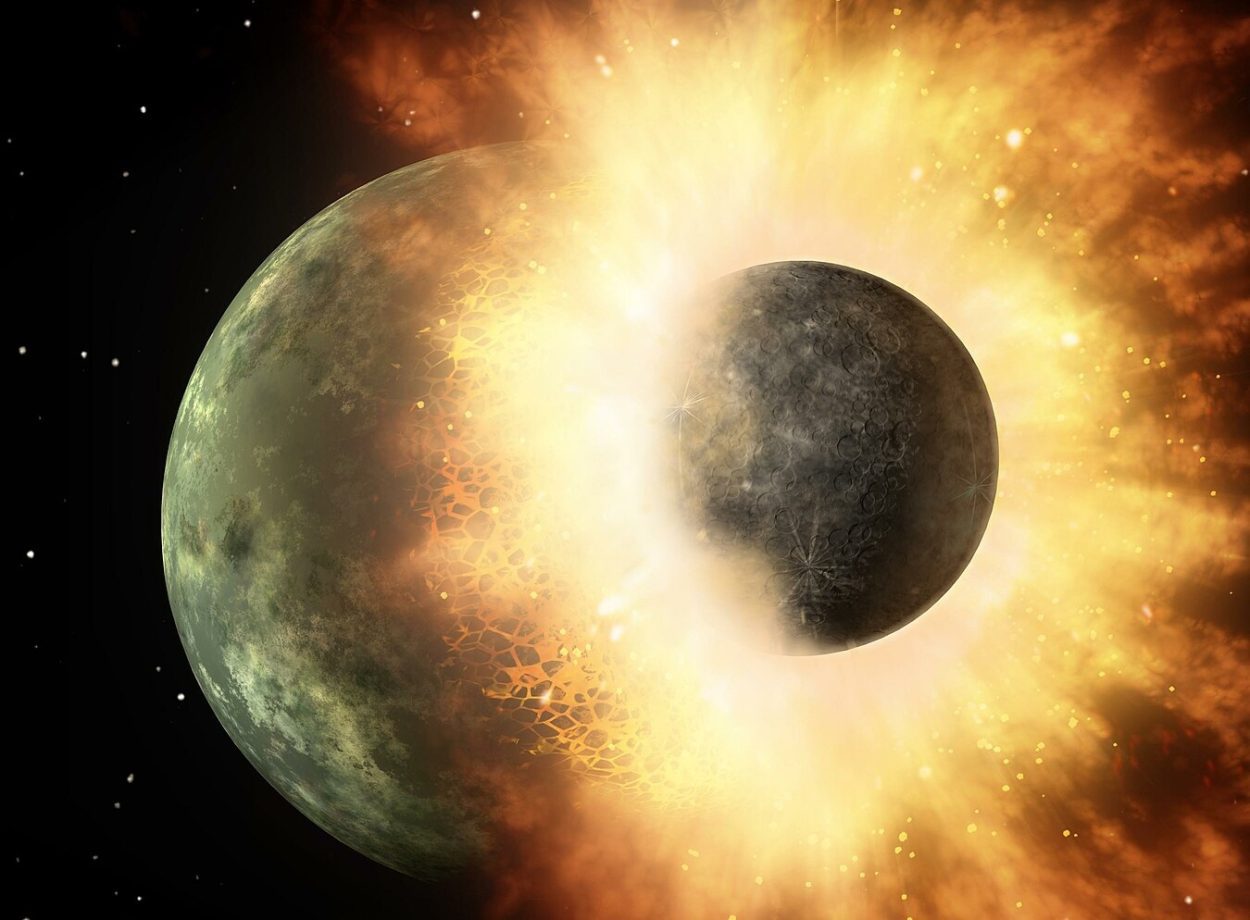According to the giant-impact hypothesis (also known as the Theia Impact), the moon was formed when a giant object such as a protoplanet crashed into the Earth when the solar system was still young.
This celestial object is often referred to as Theia, a name derived from the mythological Greek Titan, who was the mother of Selene, the deity associated with the Moon.
In line with contemporary concepts of planetary formation, Theia was one of several Mars-sized entities that inhabited the Solar System approximately 4.5 billion years ago. The resulting impact caused a fragmentation and thorough mixing of both parent bodies, with a large piece of the forming Earth splintering away that formed the Moon.
In a new study in the journal Geochemical Perspectives Letters, researchers analysed Moon dust collected by the Apollo missions in 1972. According to the researchers, the dust contains tiny crystals that formed billions of years ago, indicating that the moon is at least 4.46 billion years old, 40 million years older than previously thought.
“These crystals are the oldest known solids that formed after the giant impact. And because we know how old these crystals are, they serve as an anchor for the lunar chronology,” says Philipp Heck, the Field Museum’s Robert A. Pritzker Curator for Meteoritics and Polar Studies and the Senior Director of the Negaunee Interactive Research Centre.
When the Mars-size object hit the Earth and formed the Moon, the energy of the impact melted the rock that eventually became the Moon’s surface. “When the surface was molten like that, zircon crystals couldn’t form and survive. So any crystals on the Moon’s surface must have formed after this lunar magma ocean cooled,” says Heck. “Otherwise, they would have been melted and their chemical signatures would be erased.”
Because the crystals could only have crystallized after the magma ocean had cooled, establishing the age of the zircon crystals provides a lower limit on the Moon’s age. A prior investigation led by co-author Bidong Zhang proposed this age, but the latest study represents the inaugural application of an analytical technique known as atom probe tomography, definitively determining the age of the lunar crystals.
“In atom probe tomography, we start by sharpening a piece of the lunar sample into a very sharp tip, using a focused ion beam microscope, almost like a very fancy pencil sharpener,” says Greer. “Then, we use UV lasers to evaporate atoms from the surface of that tip. The atoms travel through a mass spectrometer, and how fast they move tells us how heavy they are, which in turn tells us what they’re made of.”
The atom-by-atom analysis was conducted at Northwestern University, where the researchers were able to determine how many atoms have undergone radioactive decay within the crystals. When an atom has an unstable configuration of protons and neutrons in its nucleus, it undergoes decay, shedding some of these protons and neutrons and transforming into different elements. For example, uranium decays into lead.
Scientists have determined the duration of this transformation process, and by examining the ratio of various uranium and lead atoms (referred to as isotopes) within a sample, they can determine its age.
“Radiometric dating works a little bit like an hourglass,” says Heck. “In an hourglass, sand flows from one glass bulb to another, with the passage of time indicated by the accumulation of sand in the lower bulb. Radiometric dating works similarly by counting the number of parent atoms and the number of daughter atoms they have transformed to. The passage of time can then be calculated because the transformation rate is known.”
The ratio of lead isotopes discovered by the researchers suggested an age of approximately 4.46 billion years for the sample. Consequently, it follows that the Moon must be at least as old as this determined age.
It’s important to know when the Moon formed, says Heck, because “the Moon is an important partner in our planetary system– it stabilizes the Earth’s rotational axis, it’s the reason there are 24 hours in a day, it’s the reason we have tides. Without the Moon, life on Earth would look different. It’s a part of our natural system that we want to better understand, and our study provides a tiny puzzle piece in that whole picture.”
Header Image Credit : NASA/JPL-Caltech







